CLOUD Issue 12 Glance: GenAI-Driven HE in the Greater Bay
The rapid advancement of generative artificial intelligence (AI) is driving profound structural transformations in higher education. With AI tools now capable of composing academic papers, writing code, and even designing experiments, the traditional knowledge-transfer model of teaching faces unprecedented challenges. Against this backdrop, the role of teachers is being redefined, while students are engaging in increasingly diverse and self-directed learning pathways. This transformation compels us to re-examine the fundamental question of education—the relationship between "teaching" and "learning."
At this pivotal moment of transformation, this issue of CLOUD focuses on the new paradigm of pedagogical relationships to examine the AI-driven changes taking place in the educational ecosystem. We do not intend to offer standard answers; rather, by observing a series of higher education practices in the Guangdong–Hong Kong–Macao Greater Bay Area, we hope to contribute local perspectives and empirical examples to the ongoing exploration of future pathways in education.
As one of China's most vibrant regions for science and technology innovation, the Guangdong–Hong Kong–Macao Greater Bay Area not only benefits from a high concentration of research and industrial resources, but also enjoys a strong foundation for pioneering institutional and policy experimentation. According to the Opinions on Further Advancing Shenzhen's Comprehensive Pilot Reforms to Deepen Reform and Innovation and Expand Opening-Up, issued by the General Office of the CPC Central Committee and the General Office of the State Council, Shenzhen has been tasked with exploring new pathways in key areas such as integrated reform of education, science, and talent systems, industry–education collaboration, and talent cultivation models adapted to the era of artificial intelligence. This policy orientation has made the Greater Bay Area—especially Shenzhen—an important vantage point for understanding the ongoing transformation of higher education in China.
This issue of CLOUD presents five cases from the Greater Bay Area—Southern University of Science and Technology (SUSTech), Hong Kong University of Science and Technology (HKUST), City University of Hong Kong (CityUHK), Shenzhen University of Advanced Technology (SUAT), and BGI College—showcasing how universities and educational institutions in the Greater Bay Area are exploring innovative reconstructions of teaching and talent development mechanisms in the context of generative artificial intelligence.
Southern University of Science and Technology (SUSTech) integrates the "faculty mentorship system" and the "residential college system" to break down barriers between research and teaching, promoting undergraduate students' deep involvement in real scientific research projects and building an "immersive" research ecosystem. At the same time, it has developed a university-wide AI curriculum system to promote interdisciplinary integration. The Hong Kong University of Science and Technology (HKUST) emphasises transforming teachers into entrepreneurship coaches and partners, incubating a batch of AI+ Hard Core Technology enterprises through technology entrepreneurship competitions, thereby creating a collaborative space for technology commercialisation and talent cultivation. City University of Hong Kong (CityUHK) is committed to fostering a vibrant startup ecosystem. Through its "HK Tech 300" programme, the university has established an end-to-end system encompassing idea incubation, intellectual property commercialisation, and startup support. Its curriculum centres on "discovery," strengthening originality-driven initiatives, and extends to the CityUHK (Dongguan) to form a cross-regional collaborative innovation network. Shenzhen Technology University leverages the strengths of its affiliated research institutions to build a full-cycle innovation ecosystem that spans from basic research to industrial transformation. It promotes the transition of scientific research from the laboratory to the forefront of industry through science-education synergy, industry-education integration, and a unified talent cultivation mechanism based on an academia–engineering–entrepreneurship model. Meanwhile, the BGI College, as a representative model of university–industry collaboration, explores efficient talent pipelines in the life sciences through a tripartite co-education mechanism involving research institutes, employers, and universities. Together, these practices reflect the Greater Bay Area's keen responsiveness and diverse explorations in technology-driven educational transformation.
Photo: News SUSTech |
Photo: HKUST Official Website |
Photo:BGI College Official Website |
Photo: CityUHK Official Website |
Photo:SUAT Official Website | |
By reviewing the five selected cases of institutions and universities featured in this issue of CLOUD, readers can gain a deeper understanding of the cutting-edge explorations in higher education within the Guangdong–Hong Kong–Macao Greater Bay Area in the era of generative artificial intelligence. These cases vividly demonstrate how universities are proactively transforming in areas such as innovative talent cultivation models, restructuring of teaching systems, research commercialisation, and industry-university collaborative education. They also reveal the close interconnection between regional policy directions, the construction of the research ecosystem, and the demand for industry talent.
For researchers, educators, and policymakers focused on AI applications in education, innovations in educational governance, and regional higher education trends, this issue provides concrete frontline case studies and analytical insights. It will further stimulate reflection on the intrinsic relationship between teaching and learning, as well as deepen the understanding of industry-education integration and the synergy between science and education. We hope this special feature will serve not only as an observation window but also as a dialogue platform for exploring the future of education!








